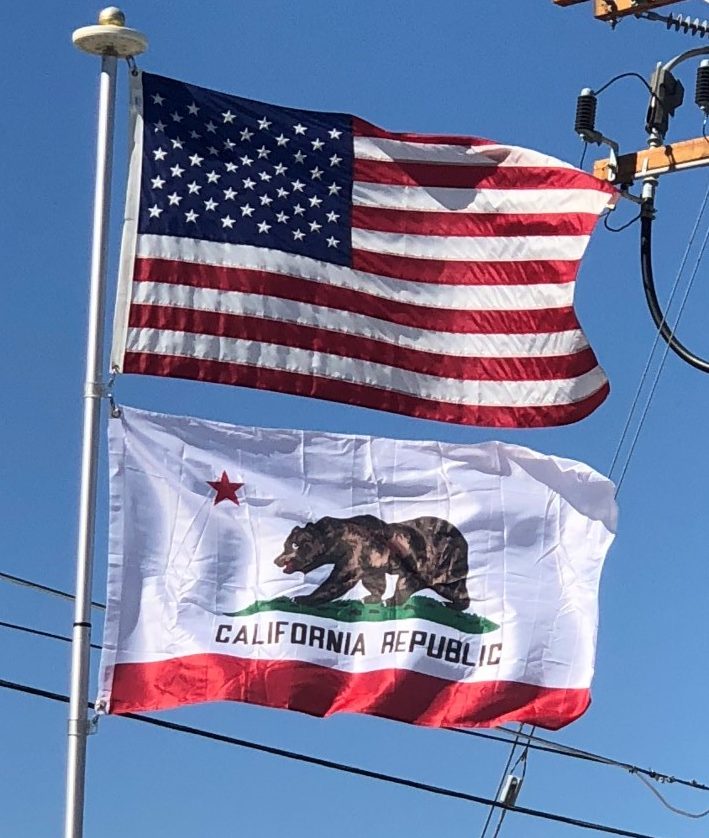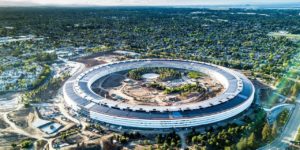
Transportation:
Roads:
California’s vast terrain is connected by an extensive system of controlled-access highways (‘freeways’), limited-access roads (‘expressways’), and highways. California is known for its car culture, giving California’s cities a reputation for severe traffic congestion. Construction and maintenance of state roads and statewide transportation planning are primarily the responsibility of the California Department of Transportation, nicknamed “Caltrans”. The rapidly growing population of the state is straining all of its transportation networks, and California has some of the worst roads in the United States.
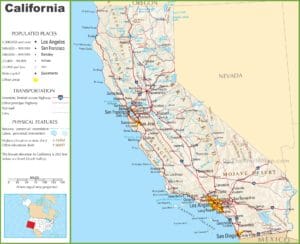
Major Interstate Freeways in California are: I-5, I-8, I-10, I-15, I-40, and I-80. There are numerous state routes that function as freeways, expressways, and highways as well, many of which are indistinguishable from Interstate Freeways.
The state has been a pioneer in road construction. One of the state’s more visible landmarks, the Golden Gate Bridge, was the longest suspension bridge main span in the world at 4,200 feet between 1937 and 1964. With its orange paint and panoramic views of the bay, this highway bridge is a popular tourist attraction and also accommodates pedestrians and bicyclists. The San Francisco–Oakland Bay Bridge (often abbreviated the “Bay Bridge”), completed in 1936, transports about 280,000 vehicles per day on two-decks. Its two sections meet at Yerba Buena Island through the world’s largest diameter transportation bore tunnel, at 76 feet wide by 58 feet high. The Arroyo Seco Parkway, connecting Los Angeles and Pasadena, opened in 1940 as the first freeway in the Western United States. It was later extended south to the Four Level Interchange in downtown Los Angeles, regarded as the first stack interchange ever built.
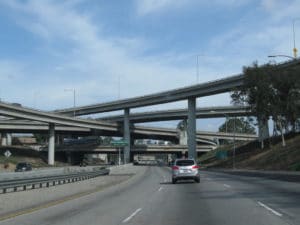
The California Highway Patrol is the largest statewide police agency in the United States in employment with over 10,000 employees. They are responsible for providing any police-sanctioned service to anyone on California’s state-maintained highways and on state property.
The California Department of Motor Vehicles is by far the largest in North America. By the end of 2009, the California DMV had 26,555,006 driver’s licenses and ID cards on file. In 2010, there were 1.17 million new vehicle registrations in force.
Nearly all counties operate bus lines, and many cities operate their own city bus lines as well. Intercity bus travel is provided by Greyhound, Megabus, and Amtrak Thruway Motorcoach.
Airports:
Los Angeles International Airport (LAX), the 6th busiest airport in the world, and San Francisco International Airport (SFO), the 23rd busiest airport in the world, are major hubs for trans-Pacific and transcontinental traffic.
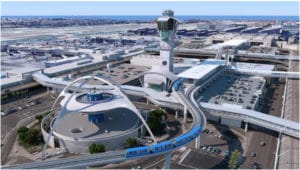
There are about a dozen important commercial airports and many more general aviation airports throughout the state.
Major commercial airports in California include:
- LAX Los Angeles International Airport
- SFO San Francisco International Airport
- SAN San Diego International Airport
- OAK Oakland International Airport
- SNA John Wayne Airport
- SJC San Jose International Airport
- SMF Sacramento International Airport
There are at least a dozen other commercial airports handling significantly smaller volumes of passengers.
Sea Ports:
California also has several important seaports. The giant seaport complex formed by the Port of Los Angeles and the Port of Long Beach in Southern California is the largest in the country and responsible for handling about a fourth of all container cargo traffic in the United States. The Port of Oakland, fourth largest in the nation, also handles trade entering from the Pacific Rim to the rest of the country.
